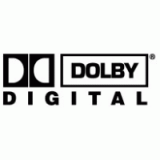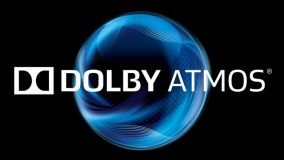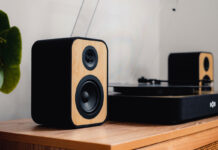 It isn’t easy to be a home theatre audio consumer these days. We’ve gone from the sheer simplicity of having a singular choice of either stereo or mono for our sound, to full-room surround sound systems that take advantage of a range of different platforms and standards. Let me help clear up any audio confusion you may have, and run down what are Dolby Atmos, 4K audio, DTS and Digital Dolby.
It isn’t easy to be a home theatre audio consumer these days. We’ve gone from the sheer simplicity of having a singular choice of either stereo or mono for our sound, to full-room surround sound systems that take advantage of a range of different platforms and standards. Let me help clear up any audio confusion you may have, and run down what are Dolby Atmos, 4K audio, DTS and Digital Dolby.
DTS and Dolby Digital: The Common Standards
 When it comes to surround sound standards, DTS and Dolby Digital are, well, standards! By this, I mean most modern home theatre surround sound systems support at least some variety of both Dolby and DTS and use the default standard for whatever source they have at the time, be it a DVD, Blu-Ray, web videos, or cable TV. And the argument over which one is superior has been hotly debated among audiophiles for ages.
When it comes to surround sound standards, DTS and Dolby Digital are, well, standards! By this, I mean most modern home theatre surround sound systems support at least some variety of both Dolby and DTS and use the default standard for whatever source they have at the time, be it a DVD, Blu-Ray, web videos, or cable TV. And the argument over which one is superior has been hotly debated among audiophiles for ages.
 Dolby Digital is the proprietary audio compression technology made by Dolby Labs. DTS stands for Dedicated to Sound (owned by Xperi Corporation [formerly known as Digital Theater Systems, Inc.]) and it’s also a series of surround sound codecs for 5.1 and 7.1 speaker setups. Those familiar with these kinds of setups know the first number indicates the number of small surround speakers and the “.1” is a separate channel for the subwoofer.
Dolby Digital is the proprietary audio compression technology made by Dolby Labs. DTS stands for Dedicated to Sound (owned by Xperi Corporation [formerly known as Digital Theater Systems, Inc.]) and it’s also a series of surround sound codecs for 5.1 and 7.1 speaker setups. Those familiar with these kinds of setups know the first number indicates the number of small surround speakers and the “.1” is a separate channel for the subwoofer.
I could go into all the “tiers” of quality each standard offers, however suffice it to say you will be able to find comparable levels of audio from each proprietary standard across all these tiers. But, unless you are truly piecing together your perfect system and do have a preference between DTS and Dolby Digital (I am totally not wading into that debate, as I think it is subjective) it is a rare thing to have to choose between an equivalent Dolby or DTS surround sound tier.
What is 4K Audio?
 To be honest, 4K audio is a bit of a wild goose. You see, 4K is exclusively a video technology (and a sweet, sweet one at that), however lately the term has come into use in conjunction with audio, but it has more to do with technology than the actual audio. What the confusing 4K audio terminology refers to is that if you want your 4k Blu-Ray player to go through your AV receiver before it goes to your 4k TV, then that receiver needs to have HDCP 2.2 encryption and HDMI 2.0 ports. Most newer home theatre surround sound systems are indeed compatible for this, as 4K TVs are fast becoming the new standard in video.
To be honest, 4K audio is a bit of a wild goose. You see, 4K is exclusively a video technology (and a sweet, sweet one at that), however lately the term has come into use in conjunction with audio, but it has more to do with technology than the actual audio. What the confusing 4K audio terminology refers to is that if you want your 4k Blu-Ray player to go through your AV receiver before it goes to your 4k TV, then that receiver needs to have HDCP 2.2 encryption and HDMI 2.0 ports. Most newer home theatre surround sound systems are indeed compatible for this, as 4K TVs are fast becoming the new standard in video.
The Sweet Sounds of Dolby Atmos
The newest sound standard is something called Dolby Atmos, and it is definitely worth taking a listen to, as it truly gives you a right-at-the-movies audio experience. Essentially, Dolby Atmos is an audio format that premiered in 2012 in movie theatres, creating brand new 3D surround sound experiences for movie-goers. Soon, it was adapted for home theatres, and now we can enjoy “object-based” surround sound right in our living rooms.
 What that means is, in movie theatres the Dolby Atmos system places speakers overhead in the ceiling, and uses the Atmos codec to “place” sounds where they need to be in 3D space, as opposed to the illusion of 3D sound by specific audio being “pushed” there by the traditional 5.1 or 7.1 channel home theatre sound system.
What that means is, in movie theatres the Dolby Atmos system places speakers overhead in the ceiling, and uses the Atmos codec to “place” sounds where they need to be in 3D space, as opposed to the illusion of 3D sound by specific audio being “pushed” there by the traditional 5.1 or 7.1 channel home theatre sound system.
For a home-based Dolby Atmos system, you can either opt for ceiling mounted speakers, or use Atmos-enabled speakers that point and actually bounce the sound off the ceiling to create that same 3D surround sound audio. For either setup, an A/V receiver that has an Atmos renderer must first calibrate the room to determine how to produce the optimum audio environment. I wrote a blog a while back about how to create the perfect home theatre system with Dolby Atmos, if you’re interested.
So, now that you have a better idea of what are Dolby Atmos, 4K audio, DTS, and Dolby Digital. Don’t forget to check out what’s available online for home theatre technology at Best Buy. And, if you do know a thing or two about audio standards and platforms, please, add your voice to the DTS versus Dolby Digital debate in the comment section below.



